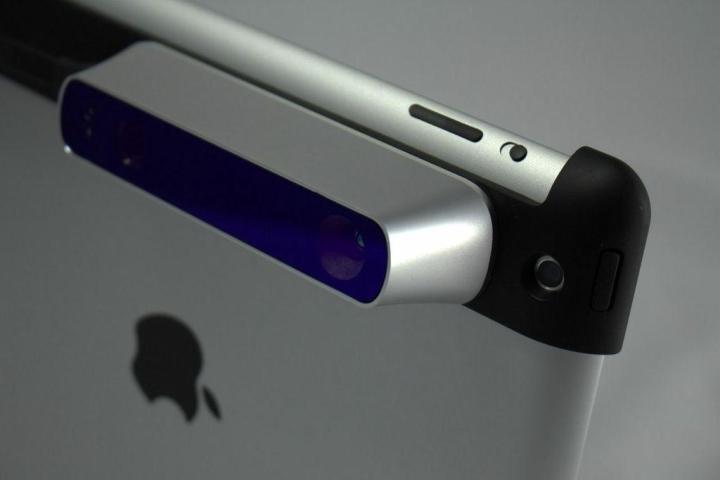
Less than 48 hours after San Francisco startup Occipital’s Structure Sensor, a device that turns your iPad into a mobile 3D scanner, went live on Kickstarter, the project garnered more than five times its goal of $100,000. With 45 days to go before the funding period ends, the Structure Sensor’s earned more than $505,000 – and the backers just keep coming.
“We’ve been floored by the overwhelming response of Kickstarter backers. We now have over 1,000 backers, and we’ve exceeded our campaign goal nearly 4X in just over 24 hours!” Occipital CEO and co-founder Jeff Powers told Digital Trends. “Kickstarter is starting to attract more fleshed-out products these days, but this is still extraordinary!”
In case you missed it, the Structure Sensor is an attachment that mounts on the side of your iPad (or Android tablet, if you use a special adapter). Combined with an app, the Structure turns your tablet into a 3D scanner, allowing you to to snap pictures on to go whenever and wherever you are inspired. Unlike desktop scanners, the Structure’s mobility also lets users scan objects of any size, from a sports car to a full living room. The flexibility is helpful for various types of tinkerers, from those who want to create 3D-printed models to others who simply want to lay out the floor plan for a home renovation.
With the extra funding, Powers says he will put the money toward a higher volume of production so more sensors will reach more consumers around the world. “More funding equals a stronger community,” he says.
Overnight crowdfunding successes aren’t unheard of – most recently, the Canary Smart Home Security system met its goal of $100,000 within its first day of launch on Indiegogo. The project went on to garner ten times the amount by the end of the funding period. But five times the asking in two days? The Structure Sensor’s both a testament to the market’s needs as well as pressure for the company to deliver.
The Structure Sensor is available for pre-order at $350 until November 1st, with an estimated shipping date of February 2014.
Editors' Recommendations
- Glasses-free 3D gaming can be amazing — but only if it’s done right
- AMD Ryzen 9 7950X vs. Ryzen 9 7950X3D: 3D V-cache compared
- You can overclock the Ryzen 7 5800X3D, but it’s still risky
- AMD’s 3D-stacked Ryzen 7 5800X3D is ‘world’s fastest gaming processor’
- Forget digging for fossils. This museum 3D printed a full T-Rex skeleton instead


